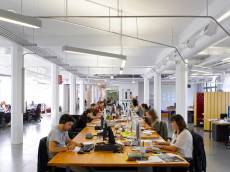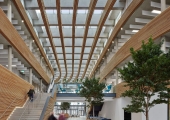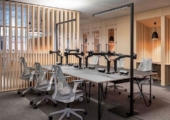June 4, 2013
Time to apply flexible working to harness women’s untapped potential
Encouraging flexible working and understanding how best to support working parents in the second stage of their career is just one of the findings of a major report published today by the Women’s Business Council (WBC) on improving women’s contribution to economic growth. The WBC, which is chaired by Ruby McGregor Smith CBE, chief executive of MITIE, is an independent working group established by the government in 2012 to explore the untapped potential of the female workforce. Maximising women’s contribution to future economic growth looks into addressing the obstacles at all stages of women’s careers, such as broadening career choices, helping to access childcare and providing the necessary skills to start new businesses. More →

























May 23, 2013
Guidance on designing in accessibility for disabled workers
by Pam Loch • Comment, Facilities management, Knowledge, Legal news, Workplace design
The government launches a campaign today using TV celebrities and disabled groups to help promote positive role models for disabled people. It’s aimed at building on the latest stats that show 81 per cent of people thought the Paralympics had a positive impact on the way disabled people are perceived. Currently they’re not well represented in the workplace, as according to DTI figures half of all disabled people are unable to find work. This is why the Equality Act 2010 plays such a vital role in promoting diversity in the workplace. Put into practice, understanding and adhering to the Equality Act 2010 requires employers to take positive action to remove certain disadvantages to disabled people posed by working practices and the physical features of premises. More →